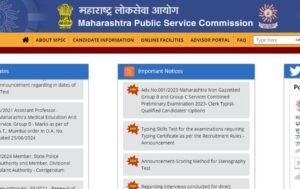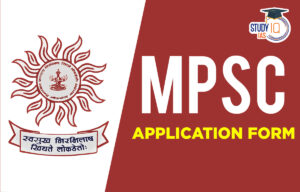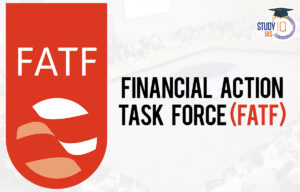Daily Current Affairs for UPSC 2022
Q) Consider the following statements regarding criterion for declaring heatwaves in India
- Based on Departure from Normal: If departure from normal is 4.5°C to 6.4°C
- Based on Actual Maximum Temperature: When actual maximum temperature ≥40°C
Which of these statements are correct?
- 2 only
- Both 1 and 2
- 1 only
- Neither 1 nor 2
Explanation:
| Heat wave is considered if maximum temperature of a station reaches at least 40°C or more for Plains and at least 30°C or more for Hilly regions. | |
| Based on Departure from Normal | Based on Actual Maximum Temperature |
|
|
| Note: If above criteria met at least in 2 stations in a Meteorological sub-division for at least two consecutive days, then the heatwave will be declared on the second day. | |
| Criterion for describing a heatwave in coastal stations: When maximum temperature departure is 4.50C or more from normal, Heat Wave may be described provided actual maximum temperature is 370C or more. | |
Q) Recently in news, the term Salmonella relates to which of the following?
- Bacteria used in repurposing plastic
- Bacteria present in human gut for digestion
- Infectious Bacteria
- Bacteria used for treatment for farm waste
Explanation:
Salmonella:
- Salmonella is a gram-negative bacterial genus belonging to the Enterobacteriaceae family that affects intestinal tract. Infection most frequently occurs through contaminated water or food.
- Most commons symptoms of salmonella infection are diarrhea, fever and stomach (abdominal) cramps, nausea, vomiting, chills etc.
Q) Consider the following statements regarding strains of bacteria
- Gram-negative bacteria are a category of bacteria that have a thick cell wall. This cell wall protects the bacteria from environment.
- Gram postive bacteria do not have thick cell walls. However, they have outer lipid membrane that protects them from their environment.
Which of these statements are not correct?
- Both 1 and 2
- 1 only
- 2 only
- Neither 1 nor 2
Explanation:
Strains of Bacteria:
- Gram-positive: Gram-positive bacteria are a category of bacteria that have a thick cell wall. This cell wall protects the bacteria from environment. (Statement 1 is not correct)
- Gram-positive bacteria do not have an outer membrane. They appear blue or purple during stain test.
- Despite thicker cell wall, they are vulnerable to certain types of anti-biotic that target cell wall.
- Gram-negative: Gram negative bacteria do not have thick cell walls. However, they have outer lipid membrane that protects them from their environment. (Statement 2 is not correct)
- They are more resistant to antibiotics and are increasingly difficult to treat. They appear pink or red in the stain test.
- They have the ability to pass along genetic materials that allow other bacteria to become drug-resist
Q) Which of the following are constitutional discretions of the governor under Indian Constitution?
- Power to reserve bill for the consideration of the President.
- Power to call upon the Chief Minister to seek information regarding administrative and legislative affairs.
- Power to dissolve the state legislative assembly on time when it loses its majority.
Select the correct answer from the code below.
- 1 and 3 only
- 1 and 2 only
- All of the above
- 2 and 3 only
Explanation:
The decisions can be taken by the governor’s discretion which is categorized into two parts:
- Constitutional
- Situational
Constitutional Discretion of Governor
The Governors of states can act at their constitutional discretion in the following instances:
- When they have to reserve the bill for the consideration of the President of India, Governors can decide on their own without the advice of the Council of Ministers. (Statement 1 is correct)
- When he has to recommend for the President’s rule in the state, he can act at his own discretion
- When he is given an additional charge as the administrator of the Union Territory, he can take actions at his own discretion
- When he has to determine the amount payable by the Government of Assam, Meghalaya, Tripura, and Mizoram to an autonomous Tribal District Council as royalty accruing from licenses for mineral exploration
- When he calls upon the Chief Minister to seek information regarding administrative and legislative affairs (Statement 2 is correct)
Situational Discretion of the Governor
The Governors of states can act at their situational discretion in the following instances:
- When he has to appoint a Chief Minister after no party has a clear majority in the election or when the incumbent dies in the office
- When he dismisses the council of ministers on an inability to prove confidence in the state legislative assembly
- When he dissolves the state legislative assembly on time when it loses its majority. (Statement 3 is not correct)
Q) Recently in news, the Sarkaria Commission (1983) and Punchhi Committee (2007) gave recommendations related to which of the following?
- Western Ghats
- Inter-state River disputes
- Special Status to some states
- Centre and State Relations
Explanation:
Various Committee on Governor Position and Role
- Sarkaria Commission, 1983: It proposed that the Vice President of India and Speaker of Lok Sabha should be consulted by the Prime Minister in the selection of Governors.
- National Commission to Review the Working of the Constitution, 2000
- Governor of a State should be appointed by the President, after consultation with the Chief Minister of that State.
- Normally the five-year term should be adhered to, and removal or transfer of the Governor should be by following a similar procedure as for appointment i.e., after consultation with the Chief Minister of the concerned State.
- Punchhi Committee, 2007
- It supported the right of the Governor to sanction the prosecution of ministers against the advice of the state government.
- Committee comprising the Prime Minister, Home Minister, Vice President, Speaker, and the concerned Chief Minister should choose the Governor.
- It recommended deleting the “Doctrine of Pleasure” from the Constitution.
- It recommended impeachment of the Governor by the state legislature.
Q) Uniform Civil Code (UCC) for all citizen has been recommended by which of the following?
- Law Commission of India in its report on reforms in family law recommended the Uniform Civil Code for entire country.
- Article 44 is the Constitution imposes a positive duty on the state to secure a Uniform Civil Code for the citizen.
- The Portuguese introduced UCC in Goa in the nineteenth century which the state follows till date.
Select the answer from the code below.
- 1 and 3 only
- 2 and 3 only
- All of the above
- 1 and 2 only
Explanation:
Uniform Civil Code
- Constitution lists the UCC among the Directive Principles of State Policy, which makes it a desirable objective, but it is not justiciable.
- Article 44: The state shall endeavour to secure a Uniform Civil Code for the citizens throughout the territory of India. (Statement 2 is correct)
- Matters of secular character like marriage cannot be brought within the guarantee enshrined under Article 25 and 26.
- Law Commission’s report on reform of family law (2018) comments that a uniform civil code “is neither necessary nor desirable at this stage.” (Statement 1 is not correct)
- It is urged that the legislature should first consider guaranteeing equality within communities between men and women, rather than equality between communities.
- Goa is the only Indian state to have a UCC in the form of common family law. The Portuguese Civil Code that remains in force even today was introduced in the 19th century in Goa and wasn’t replaced after its liberation. (Statement 3 is correct)
Q) Recently in news, Garuda VII is a bilateral exercise between India and which of the following countries?
- United States of America
- France
- Indonesia
- Russia
Explanation:
About Garuda VII
- It is the seventh edition of the bilateral air exercise between India and France that is taking place after a gap of two years.
- This joint exercise will provide a platform for both the countries to enhance operational capability and interoperability, while also sharing best practices.
- Participation of the IAF and FASF in this exercise will promote professional interaction, exchange of experiences and enhancement of operational knowledge, besides strengthening bilateral relations between the two countries.
Q) Consider the following statements
- The Indian Council of Medical Research released the first-ever report highlighting a list of priority fungal pathogen, which contains 19 fungi that represent the greatest threat to public health.
- The list is divided into three categories: critical, high, and medium priority.
Which of these statements are correct?
- 2 only
- 1 only
- Neither 1 nor 2
- Both 1 and 2
Explanation:
Context: WHO released the first-ever report highlighting a list of priority fungal pathogen, which contains 19 fungi that represent the greatest threat to public health. (Statement 1 is not correct)
Highlights of the Report
- The report indicates that the incidence and geographic range of fungal diseases are both expanding worldwide as a result of global warming and the increase of international travel and trade.
- The incidence of invasive fungal infections increased significantly among hospitalized patients, during the Covid-19 pandemic.
- As fungal infections are increasingly becoming resistant to treatment, risks for the development of more invasive forms of infections in the general population are also growing.
- Priority categories: The WHO has divided the list into three categories: critical, high and medium priority. (Statement 2 is correct)
- The critical group: Includes Candida auris (highly drug resistant), Cryptococcus neoformans, Aspergillus fumigatus, and Candida albicans.
- The high group: Includes a number of other fungi from the Candida family as well as others such as Mucorales (causes mucormycosis or “black fungus” infection).
- The medium group: Includes fungi such as Coccidioides spp and Cryptococcus gattii.
Q) Recently in news, PARAKH has been envisioned to improve which of the following?
- Skill Development
- School Curriculum
- College administration
- Assessment of government employees
Explanation:
PARAKH:
- PARAKH (Performance Assessment, Review and Analysis of Knowledge for Holistic Development) is envisaged as an instrument for setting up comparative measures and equivalence among school examination boards and promoting collaboration among them.
- Functions: PARAKH is expected to address the issue of disparities in scores of students of different boards by setting standards for student assessment and evaluation for all school boards in the country.
- It will not just conduct future rounds of National Achievement Surveys (NAS) and other surveys on learning outcomes, but also review NAS 2017/2018 and 2021 exercises to identify areas for improvement.
- PARAKH will manage India’s participation in international assessments like the Program for International Student Assessment (PISA), Trends in International Mathematics and Science Study (TIMSS), or Progress in International Reading Literacy Study (PIRLS).
Q) Recently in news, the Miya Museum was opened in which of the following states?
- West Bengal
- Bihar
- Telangana
- Assam
Explanation:
Context: The Miya Museum opened in Goalpara district of Assam was shut down within two days.
More on the News:
- Reasons given for shutdown: Many leaders of the ruling party believed that the museum was a cultural intimidation and was constructed as a bid to appropriate Assamese culture.
- The decision to shutdown was taken as a house allotted under the Prime Minister’s Awas Yojana-Gramin scheme was converted into a museum in violation of the rules.
- The museum showcased the culture of Bengali-speaking or Bengal-origin Muslims in Assam.
Miya Community:
- Origin: Bengali-speaking Muslims are pejoratively referred to as ‘Miya’ in Assam. This distinguishes them from Assamese Muslims known as ‘khilonjia’ (indigenous).
- Their ancestors had settled in the Brahmaputra valley after migrating from present-day Bangladesh during the British rule.
- Composition: The Miyas make up for the bulk of Assam’s Muslims accounting for more than 34% of the State’s 3.3 crore people.
- Majority of the Miya community live in the char-chaporis (sandbars or river islands) of Assam. They have been trying to project their culture as indigenous to Assam.
- Culture: The community has unique songs (bhatiali related to the river, magan geet or harvest songs, noi khelor geet or boat songs etc), equipment to catch fish and farm, as well as different kinds of boats.


 MPSC Rajyaseva 2025 Notification, Eligib...
MPSC Rajyaseva 2025 Notification, Eligib...
 MPSC Application Form 2025, Apply Online...
MPSC Application Form 2025, Apply Online...
 Financial Action Task Force (FATF), Func...
Financial Action Task Force (FATF), Func...





















